Bordeaux
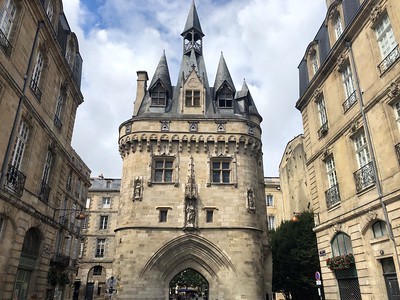
Bordeaux, Port of the Moon, is an outstanding urban and architectural ensemble created in the Age of Enlightenment.
A bend in the river Garonne has created a natural harbour here, and because of its shape, it's called Port of the Moon. The site encompasses the historic centre of Bordeaux, known for its wine production and commercial port. Its urban transformation from the 1730s onwards had a focus on neoclassical architecture.
Community Perspective: Bordeaux is a fine city to visit, with its riverside setting and it all looks neat and well-preserved. It has some lovely buildings though none stand out.
Central University City Campus of the UNAM
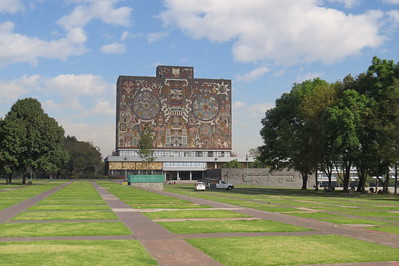
The Central University City Campus of the Universidad Nacional Autónoma de México (UNAM) is a prominent example of 20th century modernism.
It encompasses university buildings, sports facilities such as the Olympic Stadium, Cultural Center, and Central Library. They are surrounded by vast open spaces, esplanades, and gardens. Modernist elements such as reinforced concrete were combined with local volcanic stone that is also prominent in pre-Hispanic structures. Murals on the main campus were painted by Diego Rivera and David Alfaro Siqueiros.
Community Perspective: The UNAM is easily accessed by metro from Mexico City Center and it is still bustling with students. Expect no signboards so come prepared. The mural arts are the highlight.
Corfu
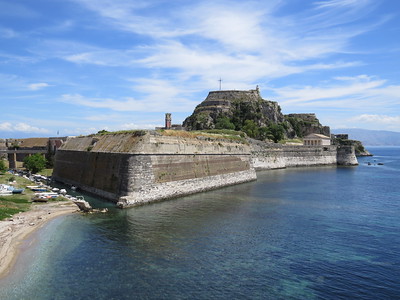
The Old Town of Corfu is noted for its defence system dating from the Venetian period.
The Venetians built two fortresses, the Old and the New Fortress, to withstand the Ottoman army. The British demolished most of them in the 19th century, during the period when Corfu was a British protectorate, but the overall form of the fortifications has been retained. The town also has preserved its remarkable British Neoclassical housing of the 19th and early 20th centuries.
Community Perspective: The imposing New Fortress lies on a hill and provides panoramic views over the city, while the Old Fortress seems to be in better shape and has some Venetian traces and a lot of British Neoclassical buildings including the Anglican Church of St. George. Hubert has described the approach from Ioannina.
Gamzigrad-Romuliana
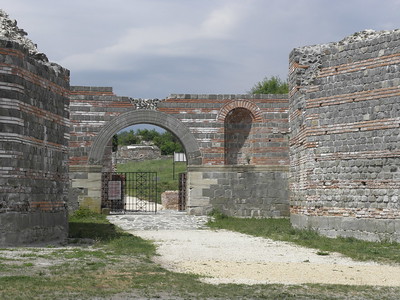
Gamzigrad-Romuliana, Palace of Galerius, is one of the most important Late Roman sites.
Construction works started in 298 by the Tetrarchy Emperor Galerius to mark the place of his birth after a victory over the Persians. The palace was designed to be a representative Imperial residence and was decorated with exceptionally fine mosaics, baths and impressive gates. The site also includes the mausoleums of the Emperor and his mother, which are visually linked to the palace.
Community Perspective: best visited with your own wheels from Belgrade, the palace is impressive with its massive towers and walls. Don’t overlook Magura Hill, where the mausolea are.
Gobustan Rock Art
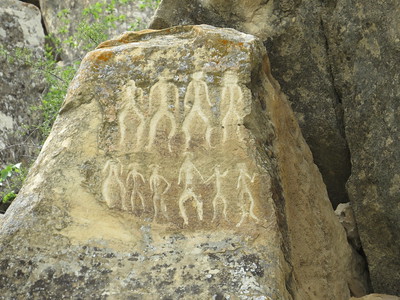
Gobustan Rock Art Cultural Landscape has an outstanding collection of more than 6,000 rock engravings.
They can be found on three flat-topped hills within a volcanic landscape. The oldest engravings were made during a warmer and wetter period. Dating from Prehistory to the Middle Ages, they depict primitive men, animals, battle pieces, ritual dances, bullfights, boats with armed oarsmen, warriors with lances in their hands, camel caravans, and pictures of sun and stars.
Community Perspective: All international visitors seem to be steered towards the Boyukdash location. A visit here should also include the modern Gobustan Museum. Gobustan had a rocky path to inscription, adequately described by Solivagant.
Iwami Ginzan Silver Mine
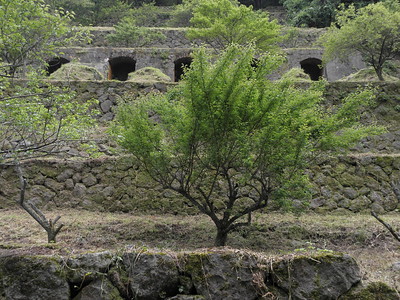
Iwami Ginzan Silver Mine and its Cultural Landscape is a relict mining landscape that used to produce large amounts of silver and led to an exchange of ideas and trade with East Asia and Europe.
The process from silver production to shipment was based on small-scale, manual operations. The well-preserved remains include mines, smelting and refining sites, settlements and ports.
Community Perspective: the site is centered around the remote town of Omori, but it can be reached by a 2.5h bus from Hiroshima. It is well-equipped to receive visitors and foreigners get a reduction on the entrance fee! None of the reviewers were much in awe about it, and Peter has a conspiracy theory to share on how this got inscribed.
Jeju
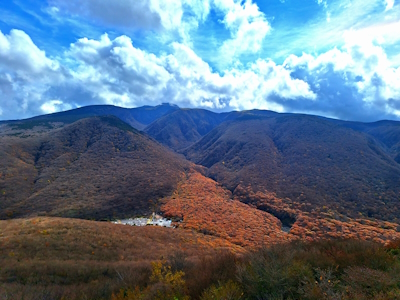
Jeju Volcanic Island and Lava Tubes comprise a rare, large shield volcano built over a hot spot on a stationary continental crust plate.
The site includes a system of lava tube caves that is considered the most impressive and significant in the world, with speleothems and multi-coloured carbonate decorations among its outstanding features. Furthermore, the Seongsan Ilchulbong tuff cone is a dramatic landscape element and an area of study of Surtseyan-type volcanic eruptions.
Community Perspective: Jeju Island is Korea’s tropical paradise and is well worth visiting overall. Most people visit on a day tour, but rent a car if you can so you have more time for the lava tubes and Seongsan Ilchulbong.
Kaiping Diaolou
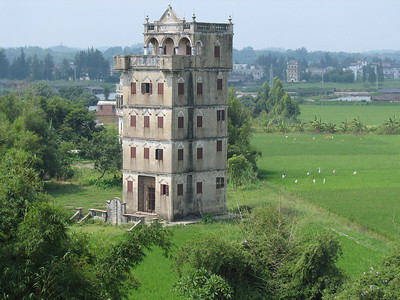
The Kaiping Diaolou and Villages comprise fortified multi-story towers, built by returning Chinese immigrants from America, Canada, Hong Kong and Malaysia.
They display a fusion of Chinese and Western decorative forms. The towers were constructed in the 1920s and 1930s when there were more than 3,000 of these structures. The diaolou served as housing and as protection against forays by bandits (and later the Japanese). Three separate forms can be distinguished: communal towers, residential towers and watchtowers.
Community Perspective: Zili is the most visited and most touristy of the villages. Els made it to Jingjiangli as well, and Nan has covered Majianlong and provided the most up-to-date practical info. The fourth component, Sanmenli, so far has been unreviewed.
Lavaux, Vineyard Terraces

Lavaux, Vineyard Terraces comprises a stretch of land along Lake Geneva where viticulture has been practiced since at least the 11th century.
Local Benedictine and Cistercian Monasteries, who owned the land, started large-scale winemaking here. They employed farmers to do the work, against a percentage of the earnings. The landscape is dotted with small villages and castles. The vines are grown on terraces.
Community Perspective: The area is best accessed from the local train between Lausanne and Vevey – you can get off at the villages to hike among the vineyards, for example from Saint Saphorin. It provides good views of the vineyards against the pretty backdrop of the Lake and the Alps.
Lopé-Okanda
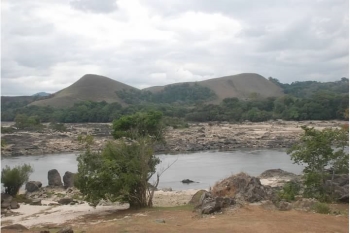
The Ecosystem and Relict Cultural Landscape of Lopé-Okanda are rich in plant life and have seen over 400.000 years of almost continuous human settlement.
The area is located where the tropical rainforest meets the savannah ecosystems. It holds a high plant diversity with over 1,550 species recorded. Its archaeological sites show evidence of ironworking and some 1,800 petroglyphs have been found. In the Neolithic and Iron Age, it seems to have been on a major migration route of people from West to Central and Southern Africa.
Community Perspective: “an expensive site to reach/visit and an uncomfortable one to travel in” - Solivagant visited in 2001 and tried to find a western gorilla which proved to be much more difficult than tracking its relatives in Rwanda and Uganda.
Mehmed Paša Sokolović Bridge
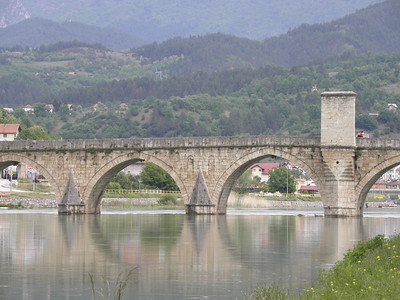
The Mehmed Paša Sokolovic Bridge in Višegrad is one of the best remaining examples of Ottoman architecture and civil engineering.
The bridge was built at the end of the 16th century by the Ottoman court architect Sinan at a strategic border location. Spanning the Drina River, it is almost 180m long and has 11 arches. The Ottoman Grand Vizier Mehmed Paša Sokolovic, who was born in this area, ordered the construction.
Community Perspective: then and now a bit of an outpost, located in Republika Srpska. Views from above (as photographed by Clyde) are especially striking.
Nisa
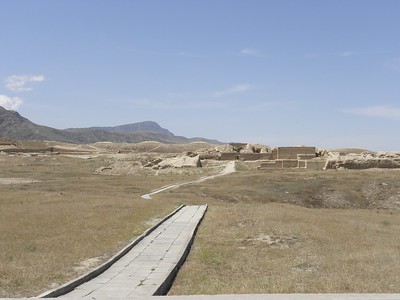
The Parthian Fortresses of Nisa are the remnants of the capital of the Parthian Empire.
The Parthians were a major power in the Near East from the mid 3rd century BCE to 224 CE, and an arch-enemy of the Roman Empire on its eastern borders. From Nisa, they created a huge empire that stretched from the Indus to the Euphrates. The site consists of the two tells of Old Nisa (the royal citadel) and New Nisa (the ancient town).
Community Perspective: Old Nisa consists of partially excavated mud brick walls, and the remains of New Nisa are even less spectacular. A visit to the National Museum in Ashgabat is essential to understand the importance of this site. Solivagant also provides a bit more background on the Parthians.
Primeval Beech Forests
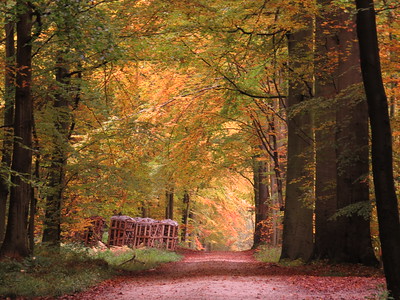
The Ancient and Primeval Beech Forests of the Carpathians and Other Regions of Europe show the expansion and genetic adaptability of the European beech since the last Ice Age.
They comprise the largest remaining forests of the European beech ('Fagus sylvatica') across 18 countries. They also hold the largest and tallest beech specimens in the world. The European beech is a very adaptable species and it is spread across areas of different altitudinal zones, with different climatic and geological conditions.
Community Perspective: “I would like this beech forest madness to stop.” – this cry from Philipp seems to sum up the verdict on this WHS nicely; Caspar also shares some philosophical insights on the matter. But reviewers keep being drawn to its many locations. An inventory of the reviews results in 14 parks ‘ticked’: Vihorlat (Slova) – Els, John, Petteri, Matejicek; Stuzica (Slova) – Jarek, John; Hainich (Ger) – Hubert, John, Ian, Nan, Adrian; Kellerwald (Ger) – Peter, Clyde, Solivagant, John, Nan, Adrian; Grumsin (Ger) – Boj, Tsunami, Adrian; Jasmund (Ger) – Thijs, John, Michael, Matejicek, Nan, Tsunami, Adrian; Serrahn (Ger) – Adrian; Sonian Forest (Bel) – Els, Caspar; Monte Cimino (Ita) – Matejicek; Foresta Umbra (Ita) – Matejicek; Bieszcziady (Pol) – Matejicek; Jizera (Cz) - Matejicek; Bettlachberg (Swi) – Philipp, Adrian; Mavrovo (NMac) – Chris.
Rainforests of the Atsinanana
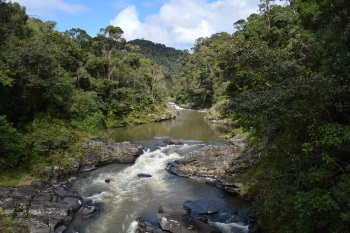
The Rainforests of the Atsinanana are recognized for their very high biodiversity and high level of endemism in both plants and animals.
These are the remaining forests in which Madagascar's unique biodiversity survives. Most of the island's plant and animal life has evolved in isolation over the past 60 million years; up to 90% of the species found here are endemic. At least 25 species of the wholly endemic Malagasy primates, the lemurs, can be found in the forests. The rainforests are spread across six national parks on steep terrain in the east of the country.
Community Perspective: All reviewers so far have described their visits to Ranomafana NP, the most accessible of the included parks at about a day's drive from the capital. The typical itinerary consists of an evening/night visit (for the nocturnal species), followed by a forest walk the next day for the diurnal ones. Lemur and chameleon sightings will be abundant.
Red Fort
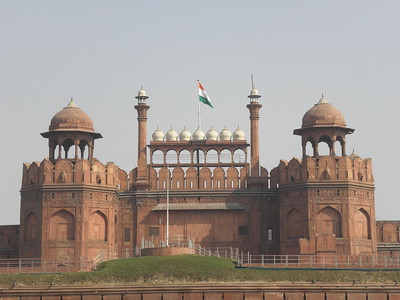
The Red Fort Complex is an ambitious expression of Mughal architecture and a testimony to the later British military use of the forts.
It was built in the mid-17th century and became a symbol of the power of the Mughal emperor Shah Jahan. In its architecture and garden design, Islamic, Persian, Timurid and Hindu traditions were combined. After 1857 the site was used as the headquarters of the British Indian Army. They introduced new colonial-style buildings and functions over the earlier Mughal structures. It was also the place where Indian independence was first celebrated and is still celebrated today.
Community Perspective: The most majestic of all sights in Delhi. The more interesting structures are at the back of the complex.
Richtersveld
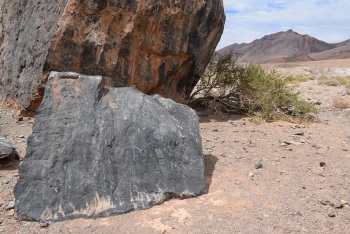
The Richtersveld Cultural and Botanical Landscape reflects the transhumance lifestyle of the Nama pastoralists.
The area is located in a mountainous desert in the north-west part of South Africa and is characterized by its succulent Karoo vegetation. It is the home ground of the indigenous Nama people - descendants of the Khoi-Khoi. The site includes the seasonal migrations and grazing grounds, stock posts (kraals) and haru oms, the portable houses of the Nama.
Community Perspective: the botanical aspect of the site is more obvious than the cultural. The most common way of access is from Vioolsdrift by a tour or 4x4 self-drive. Svein has described his adventures reaching it from Sendelingsdrift.
Rideau Canal
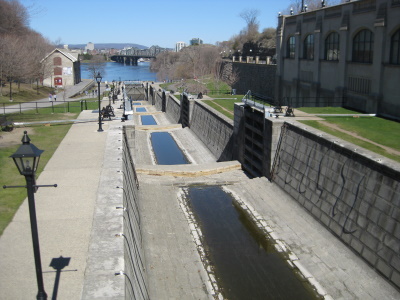
The Rideau Canal is the oldest continuously operated canal system in North America.
The 19th-century canal runs for 202 km from Ottawa, Canada's capital, to Kingston on Lake Ontario. The canal's initial purpose was military (to defend the British colony of Canada against the USA), later it opened up the area for settlement and commerce. It is mostly a slackwater canal due to the use of sections of the Rideau and Cataraqui rivers, as well as several lakes. About 19 kilometres of the route is man-made.
Community Perspective: easily accessible components are the Ottawa Locks (as described by Ian) and Kingston’s Fort Henry (Rob, Frederic). Jay, Frederik and Els both southward along the Canal, stopping at different locks and towns.
Samarra
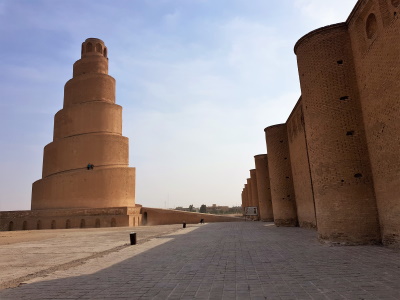
Samarra Archaeological City comprises the remains of an ancient large city that was a capital of the Abbasid Empire.
It testifies to the architectural and artistic innovations that developed there and spread to the other regions of the Islamic world, such as carved stucco and a new type of ceramic. Among its architectural monuments are the 9th-century Great Mosque and its Spiral Minaret, and the Caliphal Palace.
Community Perspective: the first review was from a visit in 1975, and the second was from one in 2021. Samarra has been virtually inaccessible for many years and is still under special security measures, but it has come out of the war relatively unscathed. Climbing the spiral staircase however seems to be out of the question nowadays, according to Tamas who visited in 2023.
South China Karst

South China Karst comprises one of the two great karst regions of the world.
This huge karst area represents the variety of karst landforms in the humid (sub)tropics. Shilin is regarded as the world’s best example of pinnacle karst (stone forests), while Libo Karst is renowned for its cone karst and Guilin Karst for its tower karst landscape.
Community Perspective: The 12 components are spread across 4 provinces. Reviews so far have focused on Shilin, the Stone Forest (Solivagant, Els, Frederik) and Guilin Karst with its spectacular scenery along the Li River (Kyle, Nan).
Sydney Opera House
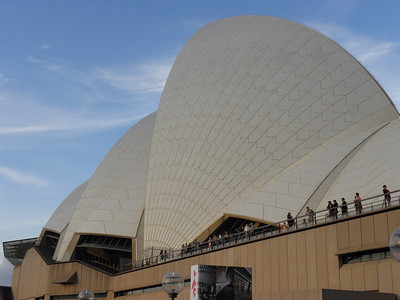
The Sydney Opera House is one of the most distinctive and famous 20th-century buildings.
This dedicated opera house and concert hall is situated on Bennelong Point in Sydney Harbour. The daring design is by the hand of the Danish architect Jorn Utzon, its engineer was Ove Arup.
Community Perspective: It’s almost a sculpture placed into the great harbour setting. One can usually walk through the building and take a peek into one of the concert halls for free. Whether a guided tour of the interior is worth it is disputed – “There is no real relationship between the outside and inside”.
Teide National Park
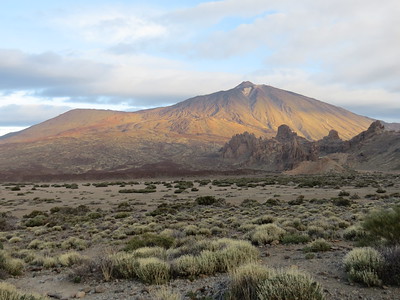
Teide National Park comprises a volcanic landscape in a spectacular setting that stands out in size, complexity, age, depth of study and ongoing relevance to science.
It covers the two large stratovolcanoes of Teide and Pico Viejo, Las Cañadas Caldera and many other volcanic features. At 3,718 m above sea level, Teide Volcano is the third-highest volcano in the world. It is a major centre for international geological research and has been so since the times of Von Humboldt.
Community Perspective: This is a fascinating place to visit for 1 or 2 days, to enjoy the lava flows and contrasting colours in the landscape. Kbecq climbed Mount Teide (in the snow!) and Clyde provides tips for the best viewpoints.
Twyfelfontein
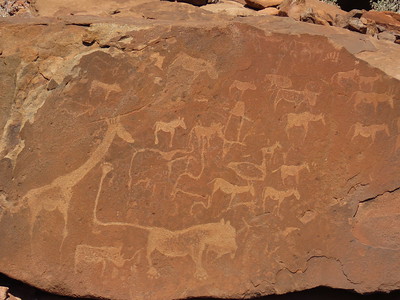
Twyfelfontein or /Ui-//aes contains over 2,000 rock art figures that relate to ritual and economic practices by San hunter-gatherer communities.
The petroglyphs and pictographs were created over a couple of thousand years until the arrival of nomadic pastoralists. They depict rhinoceroses, elephants, ostriches and giraffes as well as human and animal footprints. Their locations are related to reliable water sources.
Community Perspective: Although it lies deep in a barren valley, it sees a fair number of visitors and facilities are adequate. Els did the Lion Man circular trail with a guide and stayed overnight in the controversial Twyfelfontein Country Lodge.
Extended Sites in 2007
Piazza del Duomo (Pisa)

The Piazza del Duomo, Pisa, is a square that contains four artistically important medieval monuments.
The cluster of religious monuments was constructed between the 11th and 14th centuries, when the Tuscan town of Pisa had a fleet that reigned the Mediterranean Sea. The exteriors of the buildings in the Pisan Romanesque style show an interplay of white marble and polychrome motifs, while their interiors hold world-renowned art treasures such as frescoes.
Community Perspective: The 'Leaning Tower' is the most famous of the four, but the Cathedral and Baptistery are more stunning. Reviewers are often disappointed by the piazza as it’s such as small area fully geared to tourists. Opinions vary on whether it is worth the considerable fee (20 EUR, Nov 2023) to climb the Tower.
Klaus Freisinger Austria - 01-May-05
The Leaning Tower of Pisa must be one of the most famous monuments in the world, and going to this city gives you a distinct sense of déjà-vu - I must have seen this thing before! Well, apart from the Piazza dei Miracoli, Pisa doesn't have that much to offer and is just an average city (especially because it has lost its once vibrant seaport centuries ago), but the piazza is really great and one of the grandest architectural ensembles you will see anywhere. So, even if many Italian cities have their own campanile, you should go to Pisa to see the real thing.
Read OnSwiss Alps Jungfrau-Aletsch
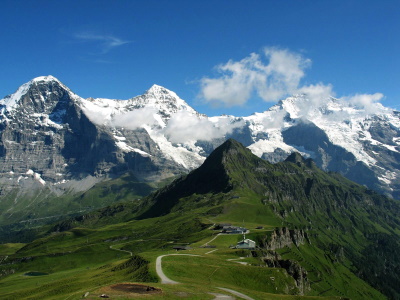
Swiss Alps Jungfrau-Aletsch is an impressive landscape and an outstanding example of the formation of the High Alps.
It includes the most glaciated part of the mountain range and the largest glacier in Eurasia, the Aletsch Glacier. The area holds 9 peaks over 4,000m: Finsteraarhorn, Aletschhorn, Jungfrau, Mönch, Schreckhorn, Gross Fiescherhorn, Hinter Fiescherhorn, Grünhorn and Lauteraarhorn.
Community Perspective: The most popular way to cover this WHS seems to be to take the expensive train up to the Jungfraujoch. Easier ways of access lie at Kandersteg (Oeschinensee) and Eggishorn.
Rajeev Aloysius Sri Lanka - 01-May-05
If you do get the chance, to go up to Jungfraujoch: The Top of Europe. SBB will take you up to the bottom of the mountain, and then a special train - which is very expensive at CHF150- will take you up to the observatory known as Top of Europe. I was fortunate to get a very special deal, where I commuted all the way from Geneva at about CHF189. There are scientific experiments being undertaken up there, including global warming, pollution, oxygen levels and so on. The view is amazing, absolutely stunning views of glaciers and green, especially in May and September. This is Switzerland at its very best. You can ski, use discs as surfboards in the perpetual snow at 10,000ft
Read On